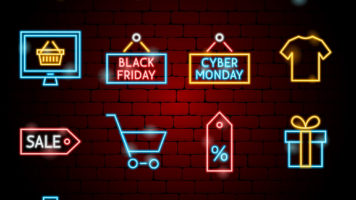Send Times and Holiday
A client approached us recently, asking about best practices around when to send emails (and when not to) during the holidays. Our response may be worth a wider distribution.
The “when to send” question has been vexing marketing email managers throughout the history of this medium. But it shouldn’t be considered as a stand-alone issue, because so many other factors are more important than send-timing in driving email subscriber engagement.
But Holiday adds a heavy burden to the discussion, because retail e-mailers have so much of their brands’ annual revenue riding on this most intense and competitive selling period, and because email is so vital to driving that revenue. The good news is that customers are obviously much more likely to be in a buying mood during holiday, and therefore much more likely to be receptive to retail marketing communications during this period.
Holiday-related buying interest and activity extend right up through Christmas Eve, lessen considerably on Christmas Day, and then resume vigorously for post-Christmas clearance events, which may extend through January. Email deployments supporting related promotions can safely follow that pattern and support their businesses without creating offense or other risks. New Years Eve and Day selling periods are just as important as any other, and just as likely to require email support.
Otherwise, the matter of send-timing — as at any time of year — should be principally driven by when the brand’s email subscribers tend to open their email. This is not a matter of testing send times against read rates; it’s a question of mailing into time periods when customers — within a given audience cohort — are most likely to be opening their email. That’s a data/research issue, and the answers will vary by vertical and audience grouping.
Subscriber contact frequency during Holiday is subject to the same principles as at any other time of year. And this is a test issue. Various contact cadences are tested against various subscriber engagement segments, with measurement of deliverability, opens, clicks, conversions, and unsubscribes. Higher cadences are more likely to do better with more engaged audiences, and vice versa. This is related to why, as above, customers may have higher contact frequency tolerances during Holiday than at other times.
In the end, though, the single most important driver of email engagement is the relevance of the message to its receiver; i.e.
- Maintaining a clean list of properly acquired (actively opted-in) email subscribers.
- Focusing on customers who’ve been email and/or purchase active within the past 120-150 days.
- Targeting messages to the customers most likely (based on preference, browse or purchase behavior) to buy what the email is selling.
- Dynamically personalizing email content to what’s being sold.
- Reflecting this targeting and personalization in subject line wording









